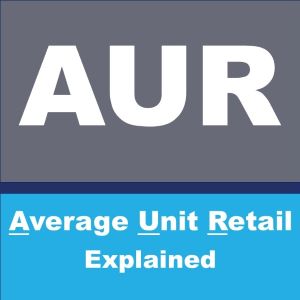As a retailer, do you know what’s eating up most of your money?
You may immediately think in areas of overhead or shrink. But when it comes to available cash in assets, financial analysts estimate up to 80% of a retailer’s total assets are inventory.
If you have no idea how your inventory is currently performing, keep reading… this tool is for you!
A retailer’s inventory can be their single largest investment. That being said, knowing whether or not you have an actual return on this investment is essential to success.
If you have items on the shelf that aren’t moving off the shelf, they’re actually costing you money. To take stock of your business and plan for the future, it’s imperative to analyze your inventory, sales, and profitability.
Step one is measuring your Gross Margin Return on Investment (GMROI).
What Is Gross Margin Return on Investment?
The Gross Margin Return on Investment (GMROI) is the ratio describing the amount of money each dollar of inventory creates for the retailer. This is a basic measurement for retail.
The GMROI reveals how much money the inventory will return above its costs. These calculations assist store owners and buyers in determining whether a sufficient gross margin currently is being earned from the items purchased, compared to the investment in inventory required to generate those gross margin dollars.
Here’s the basic formula:
GMROI = Gross margin/average inventory cost
Traditionally, this is calculated using the gross margin for a year, but monthly and weekly calculations are also common. In order to gauge the overall health of an operation, it can be calculated with a sampling of products.
How GMROI Works for the Retailer
It may sound a little complex, but the simple formula helps gauge your business. Here’s a small example of how GMROI works for a retailer:
Imagine that within the same month, Fannie’s Music Shop sells guitars for $100, which she purchases for $75. Her gross margin is $25, and the inventory’s median value throughout the month is $20. Her GMROI then is $25 divided by $20, or 1.25%.
Here’s the nice thing about this calculation: As long as the GMROI is at least a value of 1, (so as long as you’re not running into negative numbers!), your company is selling its merchandise for more than its cost. The GMROI shows you are in good shape.
What Do I Need to Properly Calculate My GMROI?
Gathering the right numbers to fill the equation are at your fingertips (or at least in your backroom!).
First, calculate your average inventory at cost. Remember, your average inventory is just the item price plus freight charges and additional taxes (make sure to subtract any discounts).
Calculate this average by adding the beginning cost inventory for each month plus the ending cost inventory for the last month of the period you want.
If you’re calculating GMROI for a season, divide by 7. If you’re calculating GMROI for a year, divide by 13.
Now you’re ready to find the gross margin of the item. The gross margin of an item is just the difference between what an item costs and what you sell it for off the shelf.
You may have heard it referred to as the gross percentage of profit, or the margin.
Here comes the fun part! Divide your sales by the average cost of inventory and times that by the gross margin percent to get GMROI.
What you now have is a ratio showing the inventory investment’s return on gross margin.
Using the Data to Help Sales
There are many ways you can use the GMROI calculation to your advantage. You can seek the ratios in whole stores, individual departments, select categories, or even by supplier and season.
In any case, GMROI gives you the insight you need to examine whether or not your inventory investment is working.
For the retailer, GMROI is a must-have calculation when planning for future events. It gives you a solid foundation to review your current results and be able to restructure the numbers to see if making adjustments will benefit your sales.
Some of the common adjustments retailers make from GMROI calculations are:
- Instructing suppliers to ship more or less frequently
- Changing the brands or varieties of products carried
- Changing suppliers for select items or categories
- Reducing inventory in a particular category
- Cutting back on “special buys” or “one-time-offers” from suppliers if the purchase quantity seems high
- Considering lowing prices to increase sales
GMROI and Working with Walmart
GMROI can be a better way to determine the value of products than just considering the margin of an individual item. A high margin product can be a slow mover and a lower margin item can produce high volume.
Walmart’s assortment balances these factors, and GMROI allows a more representative look at the overall value of the inventory.
Understanding the calculation and basic forecasting is just one way to improve your business. Want to learn more about analytics? Accounting? Partnering with Walmart?
Learn more about what 8th & Walton has to offer!




